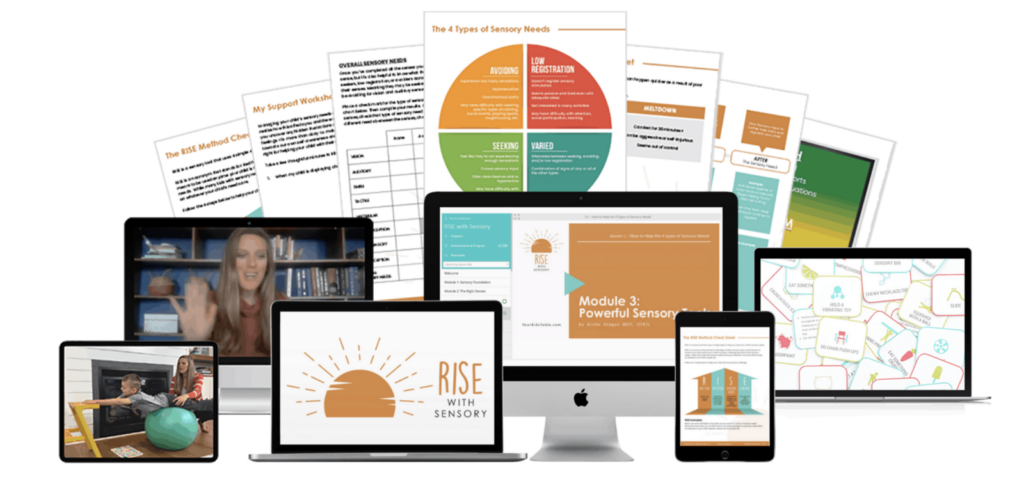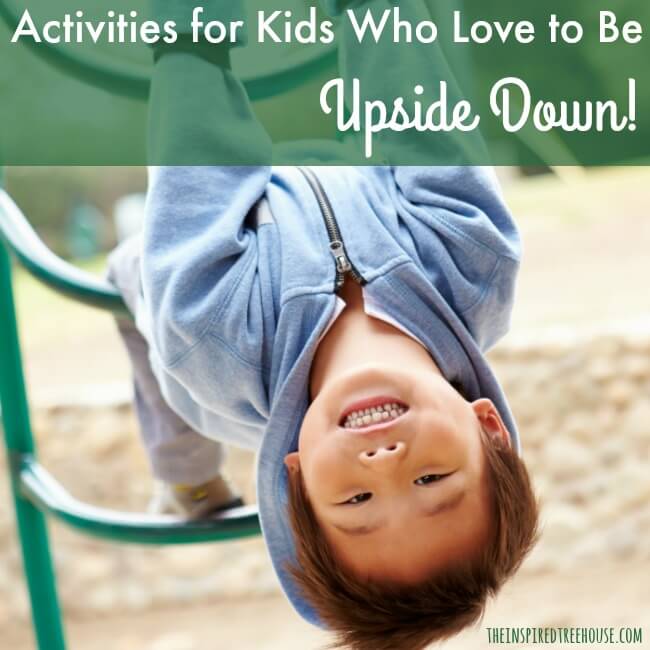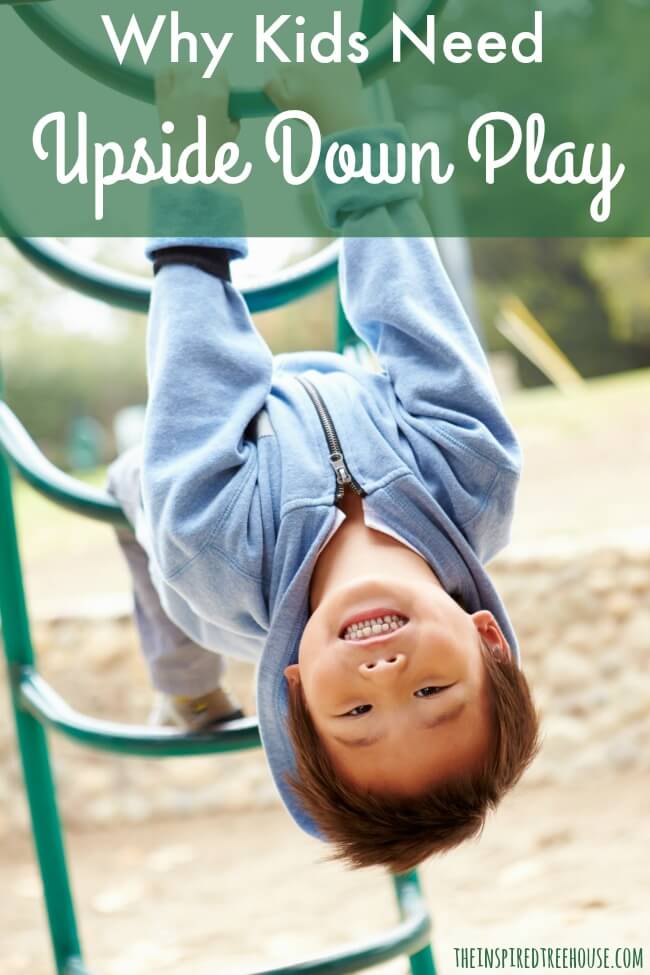When it comes to vestibular activities for kids, flipping upside down can go a long way toward giving little ones the input they need!
Has your little one ever peered at you from between her legs as she takes in the world from an upside down point of view? Funny and cute, right?
Well, it turns out that experimenting with being upside down (beginning around the age of two) is more than just cute! As kids grow, they have the ability to contort their bodies into all kinds of crazy positions to get the sensory input they need to regulate their bodies and behavior and to lay the foundation for the development of important motor skills. Read on to find out more!

RISE With Sensory Course
Are you ready to learn powerful sensory strategies to support kids’ sensory needs so they can RISE to their full potential?
Whether you’re a parent or a professional, this course is for you!
The RISE With Sensory Course is This class is AOTA approved for 7 hours (.7 CEU) and is the perfect starting point for new therapists, or refresher for experienced therapists.
Looking for a streamlined approach for working with kids with sensory concerns and for communicating clearly with parents and caregivers about sensory processing?
Click here to learn more!
We may be too old or too proud to hang our heads over the side of the bed or off of the edge of the couch, but some of us like to get adventurous with crazy yoga poses that provide us the experience of being upside down. The benefits of this gravity-defying feat include better posture, improved circulation, improved mood, better flexibility, better balance, improved upper body and core strength and more!
When you see your little one hanging upside down, don’t redirect her! Instead, supervise and encourage as she gives her vestibular, proprioceptive, visual, and tactile systems the input she needs to get in sync!
Here are some activities that provide that upside down feeling that kids crave.
Activities for Turning Upside Down
1 || Yoga! Try Plow Pose, Downward Dog Pose, or Crow Pose.
2 || Check out this video from Monkey See for how to support your child in a headstand and a demonstration of a few whole-body strengthening exercises you can do while in a headstand.
3 || They take some good core strength and may start off a bit crooked, but somersaults and cartwheels are great for getting that upside down experience for a brief second!
4 || Animal walks are always fun for kids and if they crave being inverted, the bear and ostrich walk are the things to try from this list by Arizona Orthopedic Physical Therapy.
5 || Grab a partner and try Wheelbarrow Walks in this fun relay version!
6 || You can’t go wrong with the playground for upside down play! Go down that slide head first! Lean waaaaay back on the swing! Try flips on the bars…or hang by your knees! Get creative!
Here is another great perspective about why upside down play is so important from our friend Angie at Balanced and Barefoot.


Latest posts by Lauren Drobnjak (see all)
- End of the Year Gifts for Therapists - April 14, 2024
- Playful Therapy Posters to Spruce Up Your Room - March 30, 2024
- How to Help a Baby Crawl & Creative Crawling Patterns We See in Therapy - March 19, 2024


[…] I also always try to get them into an inverted position. When their heads are upside down, they get a lot of calming vestibular input that can help them regulate for the rest of the day! Check out this post for more upside down sensory ideas! […]